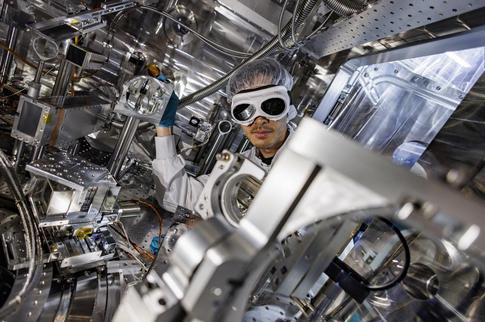XFEL: On the hunt for axions
On the hunt for axions

Axion search at the HED/HiBEF instrument of European XFEL (photo: European XFEL)
The researchers hunted for so-called axions at the High Energy Density instrument HED/HiBEF at European XFEL. Axions are tiny and incredibly light hypothetical particles. They are intended to explain, for example, why neutrons, which make up atomic nuclei alongside protons, have no electric dipole moment, even though the nuclear building blocks consist of even smaller charged particles known as quarks. This could also be an indication of new physics beyond the standard model. Furthermore, axions are a natural candidate for dark matter, the mysterious substance that makes up most of the structure of the universe.
The researchers used European XFEL in Schenefeld near Hamburg, the largest and most powerful X-ray laser in the world for their experiments. They channelled the intense X-ray beam of European XFEL through thin plates of germanium crystals. These have strong electric fields inside. For moving particles, this appears like an extremely strong magnetic field of around 1000 Tesla. This enables photons to transform themselves into axions and back again.
A titanium foil inserted between the crystals acts as a barrier for the photons and only allows the sought-after axions to pass through. These would be detected when they convert back into photons in the crystal on the other side.
In this feasibility study, the researchers have shown that their setup can compete with experiments using particle accelerators in terms of sensitivity to axions. They are thus paving the way for experiments in which axions can be measured in the mass range from milli- to kiloelectronvolts. Their aim is to improve the sensitivity by a factor of several hundred in order to be able to detect axions predicted by the theory of quantum chromodynamics.
For details, see the research article in Physical Review Letters.
